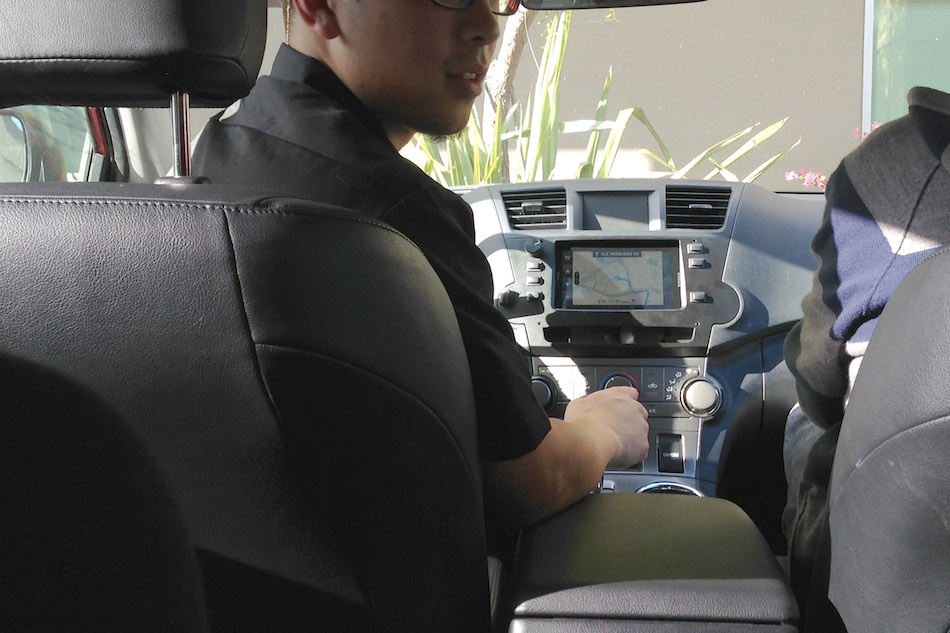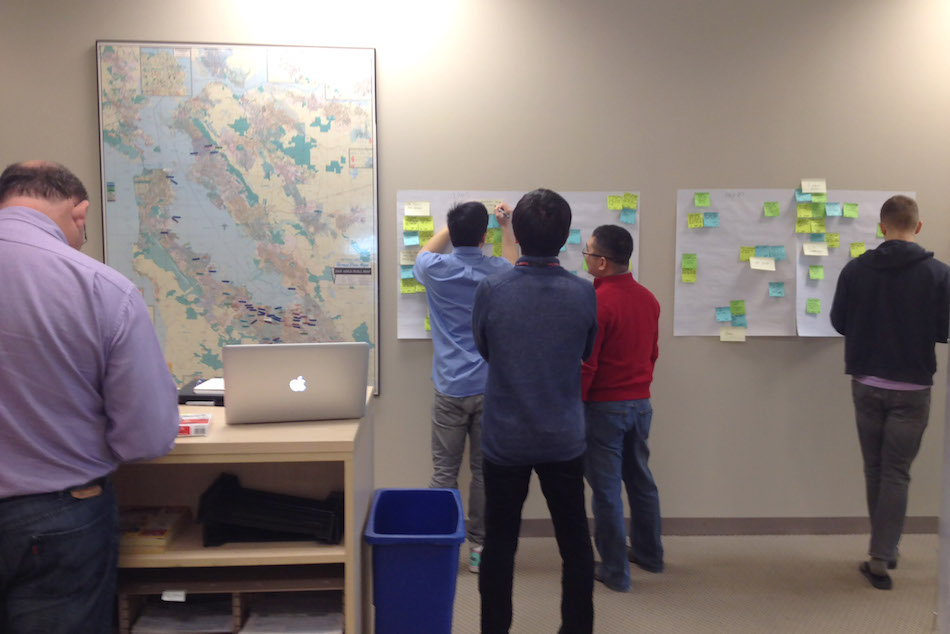Time to read: 5 min
Many people think creativity is innate, but in my experience, creativity is something you have to practice every day.
In 2012, my team at Toyota was challenged to create a new user experience with the infotainment system in the car (also known as “the thing in the middle of the dashboard”). Customers had been interacting with the infotainment system the same way for a decade, and it was time to shake things up.
My experience as a product designer has taught me that creativity is half imagination and half realization. I use tools to trigger my imagination, then generate ideas in context. To me, realization means understanding what translated correctly to the physical space (what worked) and what didn’t translate correctly (what didn’t work), then examining how this reality changes or evolves our initial imagined idea. It’s the push and pull of imagination and realization that generates creativity.
I used several tools to aid both my imagination and my realization process on the project, and I want to share them here, in hopes that other designers might benefit from some of the strategies that have helped me be successful on projects like the Toyota infotainment system UX redesign.
Triggering Imagination
When I was three, I used to play with a cardboard box and imagine it was a spaceship. In that context, imagination was easy—my only challenge was to imagine that the extra box I had lying around my house was something really entertaining. Spaceship. Done.
In the Toyota project, the challenge was to imagine a new user experience with the infotainment system. The challenge went beyond that of just one user of a cardboard box, so I had a feeling I would need more people to act as catalysts to help me generate relevant ideas.
Nevertheless, in my first week of working on the infotainment project, I jumped in a Prius, stared at the little black screen on the dashboard, and thought, “Time to let the imagination flow.” I pulled out my iPhone 4s and glanced at the apps I use. Two minutes later, I knew I had come up with the perfect solution: the ability to view Yelp restaurants and directly start navigation to bring you there! Imagination mission accomplished, right?
Not quite. Imagination is the ability to form ideas that would otherwise remain isolated in our own minds (others can’t see or interact with them). That’s just the beginning, though.
As I had suspected at the outset, in order for me to be able to fully realize the ideas generated by my imagination, I’d need more information about the types of people who would be interacting with the car dashboard, which would then allow me to generate ideas I could present and test with relevant users.
Like imagining my cardboard box was a spaceship, Yelp integration in the car seemed very relevant to me, andit might have been a great idea if Toyota only sold cars to me. But because I didn’t know for whom I was imagining, I needed to do some homework.

Imagining In Context
I recruited 30 users who fit the demographics of folks who interacted with technology in the car. The process I adapted to trigger my imagination and come up with innovative ideas became:
- Question
- Observe
- Sort
1. Question
As I worked with each user, I wanted to understand both the context of the challenge and the current user experience of the infotainment system. First, I chatted with each user and had each person describe how he or she typically interacted with the car’s technology.
2. Observe
Next, we migrated from the office to the user’s car, where I sat in the passenger seat and observed how users interacted with their cars.
3. Sort
Finally, I wrote each user’s comments and observations on sticky notes. Then, two other colleagues and I performed an activity called affinity sorting. It’s pretty simple—you start with a blank wall and group the stickies with similar comments, actions, or ideas together, in order to understand the existing user experience.
After we took those three steps, it became very easy to generate ideas and formulate potential solutions, because the ideas I was generating were directly related to the people for whom we were designing.

Realizing Ideas
Once the imaginative juices begin to flow and we’re generating ideas, how do we realize them? How do we get users to interact with them? How do we validate that these ideas will truly benefit users?
To answer these questions on the Toyota project, we first transformed the ideas we’d generated into something with which users could interact: a paper prototype.
We invited each user back to walk us through their interaction with our prototype and asked them to rate the experience as something they would want to use and recommend to friends, or something they wouldn’t use at all. So, creativity process done?
Not quite, because the realization of the imagined ideas still existed in a form that was far removed from the actual user experience—actual customers would not be interacting with the infotainment system in paper form. We call this “Ice Cream Feedback.”
Ice Cream Feedback is when you get feedback from a user that checks your sanity but still isn’t the last step in validating your idea. After all, chances are, most users will respond, “Yes,” if you ask them if they like ice cream, but we still need to know how ice cream plays a role in their lives.
The lesson here: It was important to further align our ideas and bring them into the physical world, where we can evaluate the benefit of what we created with more certainty.
After the feedback on the paper prototypes, we needed to translate the user experience concept to an environment in which we could evaluate the real benefit to users. Our team spent the next few weeks building a platform that would visually appear as an existing infotainment system, but could load software that allowed users to interact with the new user experience. The platform needed to look like a real system and log data on users’ interactions with it. We installed these prototypes in the cars of real customers.
Realization has two parts: to transform our imagined ideas into reality and to quantify how our idea actually benefits real users. After evaluating how users interacted with the system for one month, we had completed our first cycle of imagination to realization.
Creativity is a Process, Not an Instance
This is just a snapshot of the creative process I use, showing an example of one cycle of imagination and realization. My project at Toyota had dozens of these cycles in a span of just three months, and the project informed product requirements for future systems, ultimately becoming the foundation from which we gathered real feedback from users.
The point I’m trying to make is that imagination informs realization, and realization informs imagination. It’s this continual cycle of push and pull that generates creativity. Some believe that you are either born with creativity, or not. I couldn’t disagree more. In fact, I hope this post provides you with the tools to aid your creative process, like they do mine and also inspires you to continue to practice and forge your creative excellence in whatever you do.

